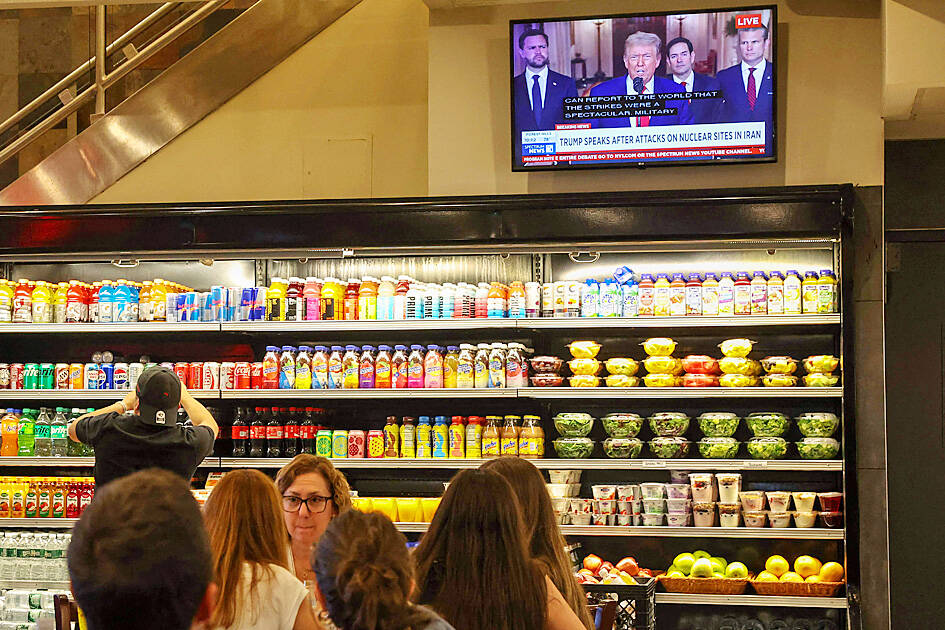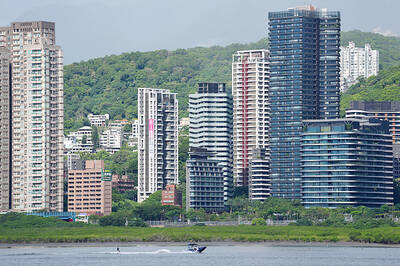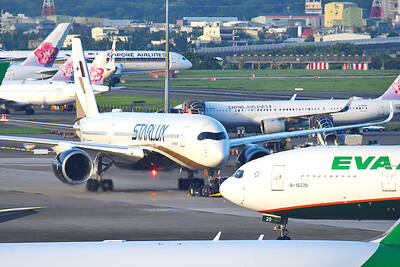US strikes on Iran’s three main nuclear facilities come at a fragile moment for the global economy, and the outlook now hinges on how forcefully the Islamic Republic retaliates.
The World Bank, the Organisation for Economic Co-operation and Development, and the IMF have all downgraded their global growth forecasts in recent months. Any significant increases in oil or natural gas prices, or disturbances in trade caused by a further escalation of the conflict would act as yet another brake on the world economy.
“We’ll see how Tehran responds, but the attack likely puts the conflict on an escalatory path,” Bloomberg Economics analysts, including Ziad Daoud, wrote in a report. “For the global economy, an expanding conflict adds to the risk of higher oil prices and an upward impulse to inflation.”

Photo: Getty Images via AFP
The rising geopolitical risks intersect with a potential escalation in tariffs in the coming weeks as US President Donald Trump’s pause of his hefty “reciprocal” levies is due to expire. The biggest economic impact from a prolonged conflict in the Middle East would likely be felt via surging oil prices.
Post the US strike, a derivative product that allows investors to speculate on price swings in crude oil surged 8.8 percent on IG Weekend Markets.
IG strategist Tony Sycamore said that if that move were to hold when trading resumes, he projected WTI crude oil futures would open at about US$80 per barrel.
In the extreme scenario in which the Strait of Hormuz is shut, crude oil could soar past US$130 per barrel, according to Daoud, Tom Orlik and Jennifer Welch. That could take the US consumer price index (CPI) near 4 percent in the summer, prompting the US Federal Reserve and other central banks to push back the timing of future rate cuts.
About a fifth of the world’s daily oil supply goes through the Strait of Hormuz, which lies between Iran and its Gulf Arab neighbors such as Saudi Arabia.
The US is a net exporter of oil. Higher crude prices would only add to the challenges the US economy is already facing. The Fed updated economic projections last week, marking down its forecast for US growth this year to 1.4 percent from 1.7 percent, as policymakers digested the impact on prices and growth of Trump’s tariffs.
As the largest buyer of Iranian oil exports, China would face the most obvious consequences from any disruption to the flow of petroleum, although its current stockpiles might offer some respite.
Any disruptions to shipping through the Strait of Hormuz would have a significant impact on the global liquefied natural gas (LNG) market, too. Qatar, which makes up about 20 percent of the global LNG trade, uses this route for exports and has no alternative passage.
That would leave the global LNG market extremely tight, pushing European gas prices significantly higher, Bloomberg Economics said.
While investors might be concerned that supplies could be interrupted if hostilities escalate, OPEC+ members, including de facto group leader Saudi Arabia, still have abundant spare capacity that could be activated. In addition, the International Energy Agency might choose to coordinate the release of emergency stockpiles to calm prices.
“The Middle East tensions represent another adverse shock to an already weak global economy,” Oxford Economics global macro research director Ben May said in a report ahead of the latest escalation. “Higher oil prices and the associated rise in CPI inflation would provide central banks with a major headache.”

RECYCLE: Taiwan would aid manufacturers in refining rare earths from discarded appliances, which would fit the nation’s circular economy goals, minister Kung said Taiwan would work with the US and Japan on a proposed cooperation initiative in response to Beijing’s newly announced rare earth export curbs, Minister of Economic Affairs Kung Ming-hsin (龔明鑫) said yesterday. China last week announced new restrictions requiring companies to obtain export licenses if their products contain more than 0.1 percent of Chinese-origin rare earths by value. US Secretary of the Treasury Scott Bessent on Wednesday responded by saying that Beijing was “unreliable” in its rare earths exports, adding that the US would “neither be commanded, nor controlled” by China, several media outlets reported. Japanese Minister of Finance Katsunobu Kato yesterday also

Taiwan’s rapidly aging population is fueling a sharp increase in homes occupied solely by elderly people, a trend that is reshaping the nation’s housing market and social fabric, real-estate brokers said yesterday. About 850,000 residences were occupied by elderly people in the first quarter, including 655,000 that housed only one resident, the Ministry of the Interior said. The figures have nearly doubled from a decade earlier, Great Home Realty Co (大家房屋) said, as people aged 65 and older now make up 20.8 percent of the population. “The so-called silver tsunami represents more than just a demographic shift — it could fundamentally redefine the

China Airlines Ltd (CAL, 中華航空) said it expects peak season effects in the fourth quarter to continue to boost demand for passenger flights and cargo services, after reporting its second-highest-ever September sales on Monday. The carrier said it posted NT$15.88 billion (US$517 million) in consolidated sales last month, trailing only September last year’s NT$16.01 billion. Last month, CAL generated NT$8.77 billion from its passenger flights and NT$5.37 billion from cargo services, it said. In the first nine months of this year, the carrier posted NT$154.93 billion in cumulative sales, up 2.62 percent from a year earlier, marking the second-highest level for the January-September

Businesses across the global semiconductor supply chain are bracing themselves for disruptions from an escalating trade war, after China imposed curbs on rare earth mineral exports and the US responded with additional tariffs and restrictions on software sales to the Asian nation. China’s restrictions, the most targeted move yet to limit supplies of rare earth materials, represent the first major attempt by Beijing to exercise long-arm jurisdiction over foreign companies to target the semiconductor industry, threatening to stall the chips powering the artificial intelligence (AI) boom. They prompted US President Donald Trump on Friday to announce that he would impose an additional